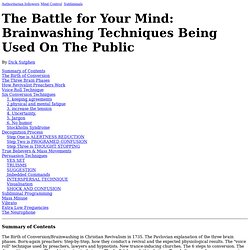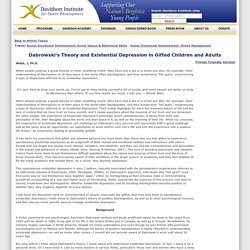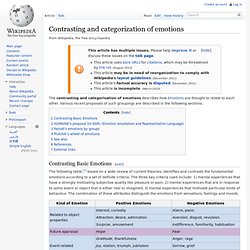

Chronological List of Published Entries. 10 things you need to know about attraction. Map of Consciousness. A Powerful Framework For Your Personal Growth In this article, I’m very excited to share with you the map of consciousness, developed by Dr.

David Hawkins in Power vs Force. This is the same map I alluded to in Are You Sleepwalking Your Life Away? Part 2 post. The reason I’m so excited is because this map is probably the single most powerful tool in your pursuit for personal growth and excellence. Firstly, having the map of consciousness empowers us in knowing where we stand in our current state of growth. Secondly, this map lists all the different levels of consciousness attainable, thus serving as a critical framework for conscious living. Are You Sleepwalking Your Life Away?
By Celes on Jan 2, 2009 | ShareThis Email This Post “The first step toward change is awareness.” – Nathaniel Branden (Originally written and published on Jan 2 ’09) Do you have a clear direction for your life?

What life long goals and dreams do you have for your life, career, health, relationships, wealth and spirituality? An obstacle to living life fully. People with lyme disease or iron deficiencies or any other such ailments may appear to be quite lazy, especially if they forego activities that their friends and families partake in.

These problems are especially troublesome if they're undiagnosed, for no one can see or know of a specific cause of a person's inactivity. Of course, all of the possible causes (save the physiological) don't justify a life without accomplishment. Nor does knowing that you're being lazy because of fear compensate for what you miss out on in life because of your unwillingness to act. The key to dealing with laziness is taking action, and the key to taking action is finding the motivation to do so. What do we do, though, when a person simply doesn't want to be motivated to do anything? And how do we define "lazy"? My definition most certainly would be different than yours. Of course, the answers aren't simple. Top 10 Thinking Traps Exposed. Our minds set up many traps for us. Unless we’re aware of them, these traps can seriously hinder our ability to think rationally, leading us to bad reasoning and making stupid decisions.
Features of our minds that are meant to help us may, eventually, get us into trouble. Here are the first 5 of the most harmful of these traps and how to avoid each one of them. 1. The Anchoring Trap: Over-Relying on First Thoughts “Is the population of Turkey greater than 35 million? Lesson: Your starting point can heavily bias your thinking: initial impressions, ideas, estimates or data “anchor” subsequent thoughts. This trap is particularly dangerous as it’s deliberately used in many occasions, such as by experienced salesmen, who will show you a higher-priced item first, “anchoring” that price in your mind, for example.
What can you do about it? Always view a problem from different perspectives. 2. Consider the status quo as just another alternative. 3. Be OK with making mistakes. The Battle for Your Mind: Brainwashing Techniques Being Used On The Public By Dick Sutphen. Authoritarian followers Mind Control Subliminals By Dick Sutphen Summary of Contents The Birth of Conversion The Three Brain Phases How Revivalist Preachers Work Voice Roll Technique Six Conversion Techniques 1. keeping agreements 2.physical and mental fatigue 3. increase the tension 4.

Uncertainty. 5. Jargon 6. No humor Stockholm SyndromeDecognition Process Step One is ALERTNESS REDUCTION Step Two is PROGRAMED CONFUSION Step Three is THOUGHT STOPPINGTrue Believers & Mass Movements Persuasion Techniques YES SET TRUISMS SUGGESTION Imbedded Commands INTERSPERSAL TECHNIQUE Visualisation SHOCK AND CONFUSIONSubliminal Programming Mass Misuse Vibrato Extra Low Frequencies The Neurophone. Dabrowski’s Theory and Existential Depression in Gifted Children and Adults. Webb, J, Ph.D.

When people undergo a great trauma or other unsettling event—they have lost a job or a loved one dies, for example—their understanding of themselves or of their place in the world often disintegrates, and they temporarily "fall apart," experiencing a type of depression referred to as existential depression. It's very hard to keep your spirits up. You've got to keep selling yourself a bill of goods, and some people are better at lying to themselves than others. If you face reality too much, it kills you. ~ Woody Allen. Contrasting and categorization of emotions. The contrasting and categorisation of emotions describes how emotions are thought to relate to each other.

Various recent proposals of such groupings are described in the following sections. Contrasting Basic Emotions[edit] The following table,[1] based on a wide review of current theories, identifies and contrasts the fundamental emotions according to a set of definite criteria. The three key criteria used include: 1) mental experiences that have a strongly motivating subjective quality like pleasure or pain; 2) mental experiences that are in response to some event or object that is either real or imagined; 3) mental experiences that motivate particular kinds of behaviour.
The combination of these attributes distinguish the emotions from sensations, feelings and moods. HUMAINE's proposal for EARL (Emotion Annotation and Representation Language)[edit] Parrott's emotions by groups[edit]